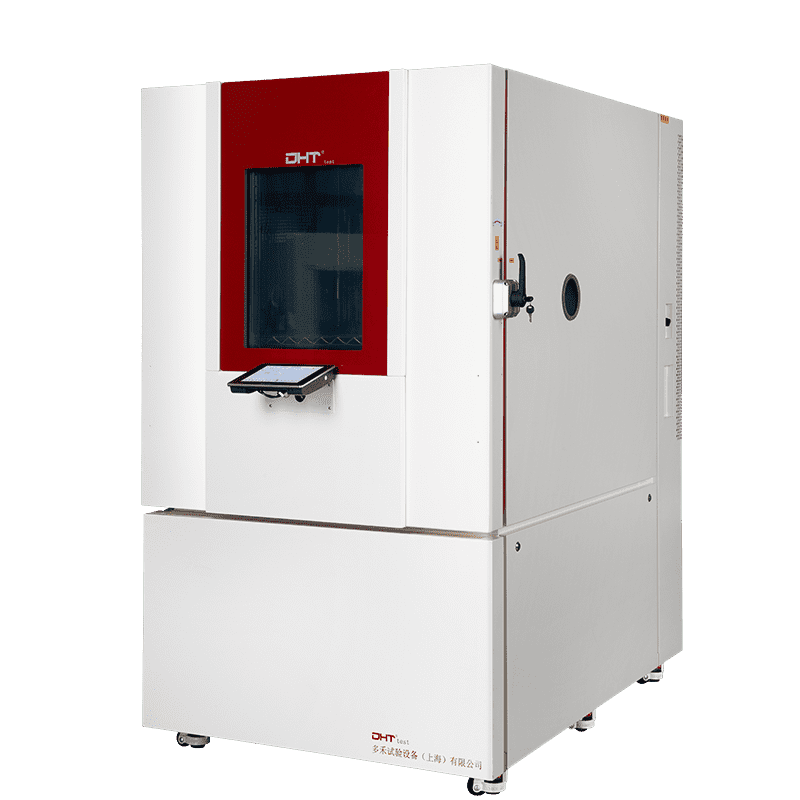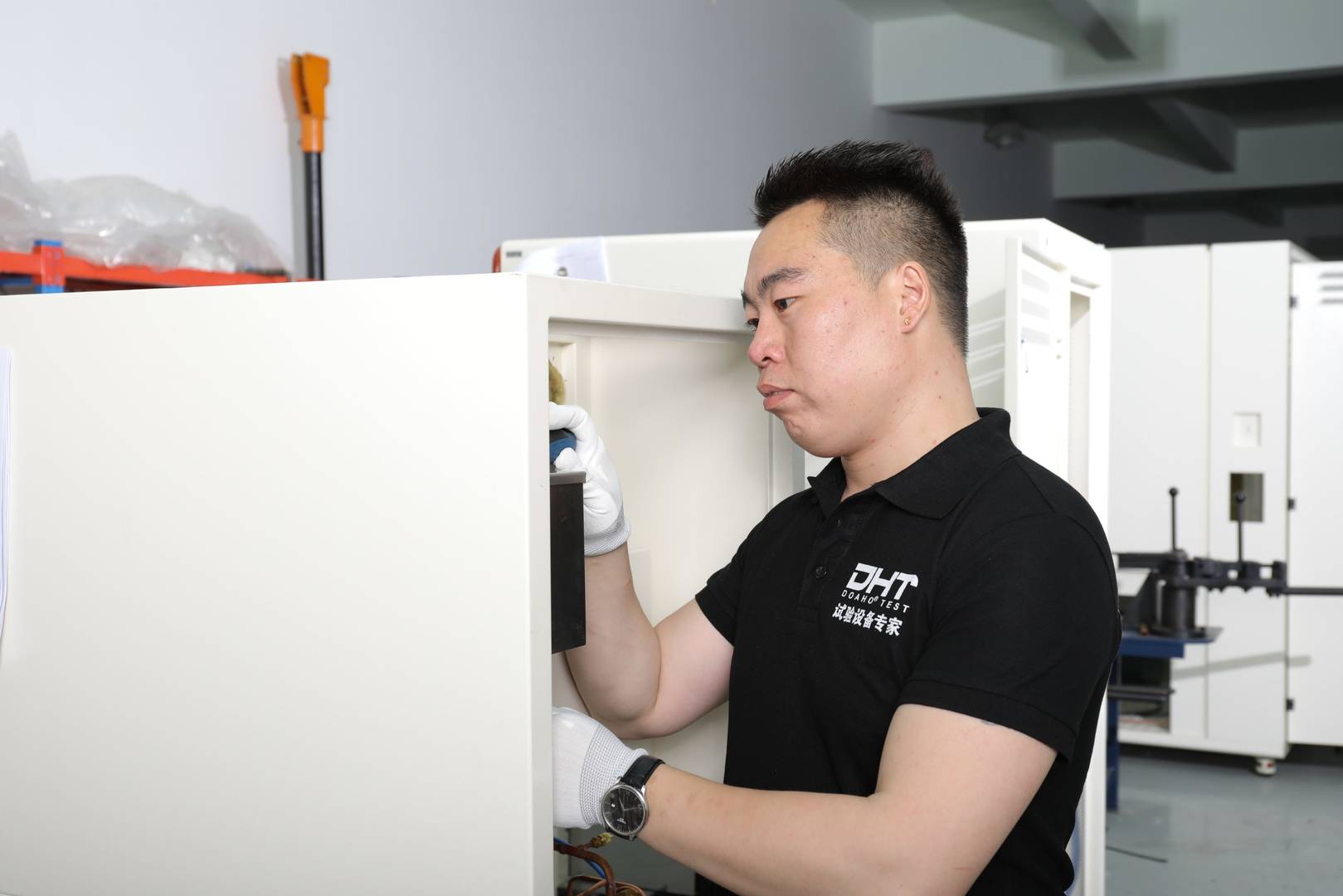Für viele Unternehmen ist einer der häufigsten Herausforderungen beim Betrieb einer Umweltprüfkammer der hohe Energieverbrauch. Übermäßiger Energieverbrauch erhöht nicht nur die Betriebskosten, sondern belastet auch die unternehmerischen Nachhaltigkeitsziele und Kohlenstoffreduktionsinitiativen. Wie können wir also den Energieverbrauch einer Umweltkammer effektiv senken und gleichzeitig die Genauigkeit und Zuverlässigkeit der Tests sicherstellen? Basierend auf praktischen Erfahrungen teilt dieser Artikel eine Reihe bewährter, umsetzbarer Energiesparstrategien.
I. Am Ursprung beginnen: Strategische Entscheidungen bei der Auswahl und Installation von Geräten
Energieeinsparungen beginnen mit Beschaffung und Planung. Die richtigen Entscheidungen in der Anfangsphase legen den Grundstein für langfristige operative Effizienz.
-
Priorisierung von hocheffizienten Geräten
-
Variable Frequenz Kompressoren sind der Schlüssel: Im Gegensatz zu traditionellen Festdrehzahlkompressoren, die ständig starten und stoppen, können Kompressoren mit variabler Frequenz die Leistungsabgabe reibungslos anpassen. Dies vermeidet große Einschaltströme beim Start und ermöglicht es dem System, bei niedrigerer Leistung zu laufen und gleichzeitig stabile Temperaturen aufrechtzuerhalten. In der Praxis kann dies den Energieverbrauch um 20%–30% senken und die Lebensdauer des Geräts verlängern.
-
Fokus auf Isolierungsleistung: Die Isolierqualität der Kammer hat direkten Einfluss auf Energieverluste. Überprüfen Sie immer das Material und die Dicke der Isolierschicht. Eine dicke Polyurethanschaumschicht, die mit Hochdruckschäumtechnologie hergestellt wurde, reduziert beispielsweise den Wärmetransfer erheblich und entlastet sowohl das Heiz- als auch das Kühlsystem.
-
Bewerten der Wärmeaustausch Effizienz: Effiziente Wärmeübertrager sind entscheidend. Lamellenverdampfer und -kondensatoren mit hydrophiler Beschichtung maximieren die Wärmeübertragungsfläche und -leistung, sodass das Kühlsystem mit deutlich höherer Effizienz arbeiten kann.
-
-
Schaffen Sie die ideale Installationsumgebung
-
Sorgen Sie für Belüftung und Wärmedissipation: Kammern, insbesondere der Kondensator, benötigen ausreichende Luftzirkulation und Platz. Befolgen Sie stets die Herstellerrichtlinien und lassen Sie rund um die Einheit genügend Freiraum. Schlechte Belüftung verringert die Kondensatoreffizienz, erhöht die Arbeitsbelastung des Kompressors und führt zu drastisch steigendem Energieverbrauch.
-
Kontrollieren Sie die Umgebungstemperatur: Idealerweise sollten Kammern in einem temperaturgesteuerten Raum aufgestellt werden (empfohlen: 20–25°C). Studien zeigen, dass die Absenkung der Umgebungstemperatur um nur 1°C die Kühleffizienz erheblich verbessert. Vermeiden Sie eine Installation in direktem Sonnenlicht oder in der Nähe von Öfen, Kesseln oder anderen Wärmequellen.
-
II. Prozessoptimierung: Klügerer täglicher Betrieb
Gute Betriebsgewohnheiten sind der unmittelbarste und effektivste Weg, um Energie zu sparen.
-
Energiesparende Praktiken übernehmen
-
Minimieren unnötiger Türöffnungen: Jedes Mal, wenn die Kammeröffnung geöffnet wird, wird die stabile Umgebung im Inneren gestört, wodurch das System zusätzlichen Energieverbrauch benötigt, um die Bedingungen wiederherzustellen.
-
Optimieren Sie die Probenplatzierung: Proben sollten den Luftstrom nicht blockieren. Übermäßig gefüllte Layouts verringern die Temperaturgleichmäßigkeit und zwingen das System, härter zu arbeiten, um zu kompensieren. Eine ordnungsgemäße Anordnung gewährleistet sowohl die Testgenauigkeit als auch die Energieeffizienz.
-
-
Entwickeln Sie klügere Testpläne
-
Wenn möglich, Batch-Tests durchführen: Gruppieren Sie Proben, die ähnliche oder identische Testbedingungen erfordern, zusammen. Dies verhindert häufige Start-Stopp-Zyklen für nur wenige Proben, steigert die Effizienz und senkt die Energiekosten pro Test.
-
Verwenden Sie angemessene Temperaturwechselraten: Innerhalb der Grenzen der Teststandards sollten extrem schnelle Temperaturübergänge vermieden werden. Übermäßige Rampraten belasten Kompressoren und Heizungen stark, was zu einem sprunghaften Anstieg des Energieverbrauchs führt. Eine moderate Ramprate—wie zum Beispiel 3°C/min statt 5°C/min—trifft oft das beste Gleichgewicht zwischen Effizienz und Genauigkeit.
-
-
Feinabstimmung der Betriebsparameter
-
Kontrolltoleranzen verschärfen: Wenn Standards 25°C ±3°C erfordern, vermeiden Sie das Einstellen auf 25°C ±5°C. Engere Toleranzen reduzieren unnötige Systemschwankungen und verbessern den Energieverbrauch.
-
Optimieren Sie Zyklusprofile: Für thermische Zyklustests sollten Sie in Betracht ziehen, die Haltezeiten an den Hoch-/Tieftemperaturpunkten zu verlängern und die Überbrückungszeiten dort zu verkürzen, wo dies angemessen ist. So kann das System in stabilen Phasen effizienter arbeiten.
-
III. Langfristige Sicherstellung: Die entscheidende Rolle der regelmäßigen Wartung
Auch das fortschrittlichste Gerät wird ohne angemessene Wartung zu einem „Energiefresser“. Präventive Wartung ist entscheidend, um die Energieeffizienz zu erhalten.
-
Den Kondensator regelmäßig reinigen: Dies ist die kostengünstigste Energiesparmaßnahme. Je nach Staubbelastung monatlich oder vierteljährlich reinigen. Ein staubverstopfter Kondensator isoliert das System wie eine dicke Decke, reduziert die Wärmedissipation drastisch und steigert den Energieverbrauch.
-
Türdichtungen überprüfen: Untersuchen Sie Türdichtungen auf Risse, Alterung oder Verformung. Ein einfacher Test: Schließen Sie die Tür auf einem Blatt Papier—zieht es sich leicht heraus, ist die Abdichtung unzureichend und Kälte-/Wärmeverluste sind wahrscheinlich. Dichtungen bei Bedarf austauschen.
-
Kältemittel und Sensoren überwachen: Lassen Sie die Systemdruck- und Kühlmittel-Füllstände regelmäßig von Fachleuten überprüfen. Kalibrieren Sie auch die Temperatur- und Feuchtigkeitssensoren regelmäßig. Sensorabweichungen können falsche Heiz-, Kühl- oder Entfeuchtungsbefehle auslösen, was zu verstecktem Energieverlust führt.
Energieeffizienz: Ein systematischer Ansatz und eine klügere Art der Verwaltung
Die Reduzierung des Energieverbrauchs in Temperatur- und Feuchtigkeitskammern wird nicht durch eine einzige Maßnahme erreicht, sondern durch eine umfassende Strategie. Es erfordert eine intelligente Testplanung, regelmäßige vorbeugende Wartung, optimale Installationsbedingungen, die Einführung von Energiespartechnologien, verfeinerte Testmethoden und ein höheres Bewusstsein der Bediener.
In der heutigen Umgebung steigender Energiekosten und zunehmender unternehmerischer Verantwortung für Nachhaltigkeit ist Energieeffizienz nicht mehr optional—sie ist unerlässlich. Durch die Anwendung der oben skizzierten Methoden können Unternehmen die Betriebskosten erheblich senken, zuverlässige Testergebnisse sicherstellen und ihre Wettbewerbsfähigkeit durch grünere, effizientere Betriebsabläufe stärken.


